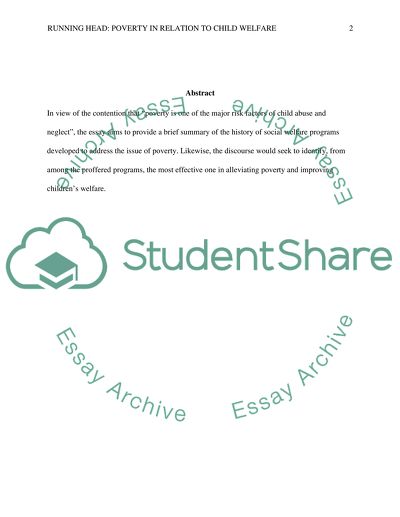Cite this document
(“Poverty in relation to Child Welfare Essay Example | Topics and Well Written Essays - 1500 words”, n.d.)
Poverty in relation to Child Welfare Essay Example | Topics and Well Written Essays - 1500 words. Retrieved from https://studentshare.org/miscellaneous/1571531-poverty-in-relation-to-child-welfare
Poverty in relation to Child Welfare Essay Example | Topics and Well Written Essays - 1500 words. Retrieved from https://studentshare.org/miscellaneous/1571531-poverty-in-relation-to-child-welfare
(Poverty in Relation to Child Welfare Essay Example | Topics and Well Written Essays - 1500 Words)
Poverty in Relation to Child Welfare Essay Example | Topics and Well Written Essays - 1500 Words. https://studentshare.org/miscellaneous/1571531-poverty-in-relation-to-child-welfare.
Poverty in Relation to Child Welfare Essay Example | Topics and Well Written Essays - 1500 Words. https://studentshare.org/miscellaneous/1571531-poverty-in-relation-to-child-welfare.
“Poverty in Relation to Child Welfare Essay Example | Topics and Well Written Essays - 1500 Words”, n.d. https://studentshare.org/miscellaneous/1571531-poverty-in-relation-to-child-welfare.


